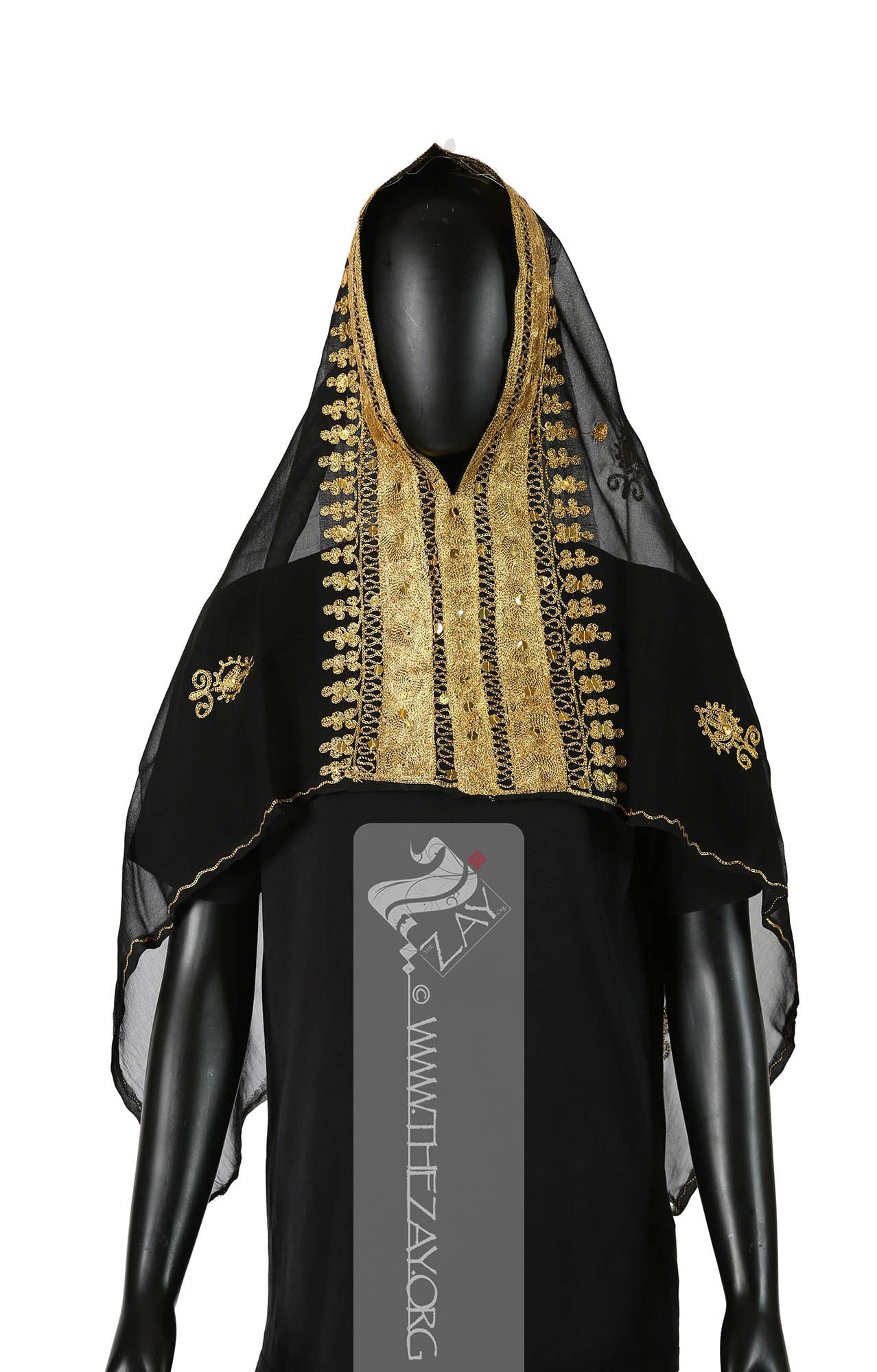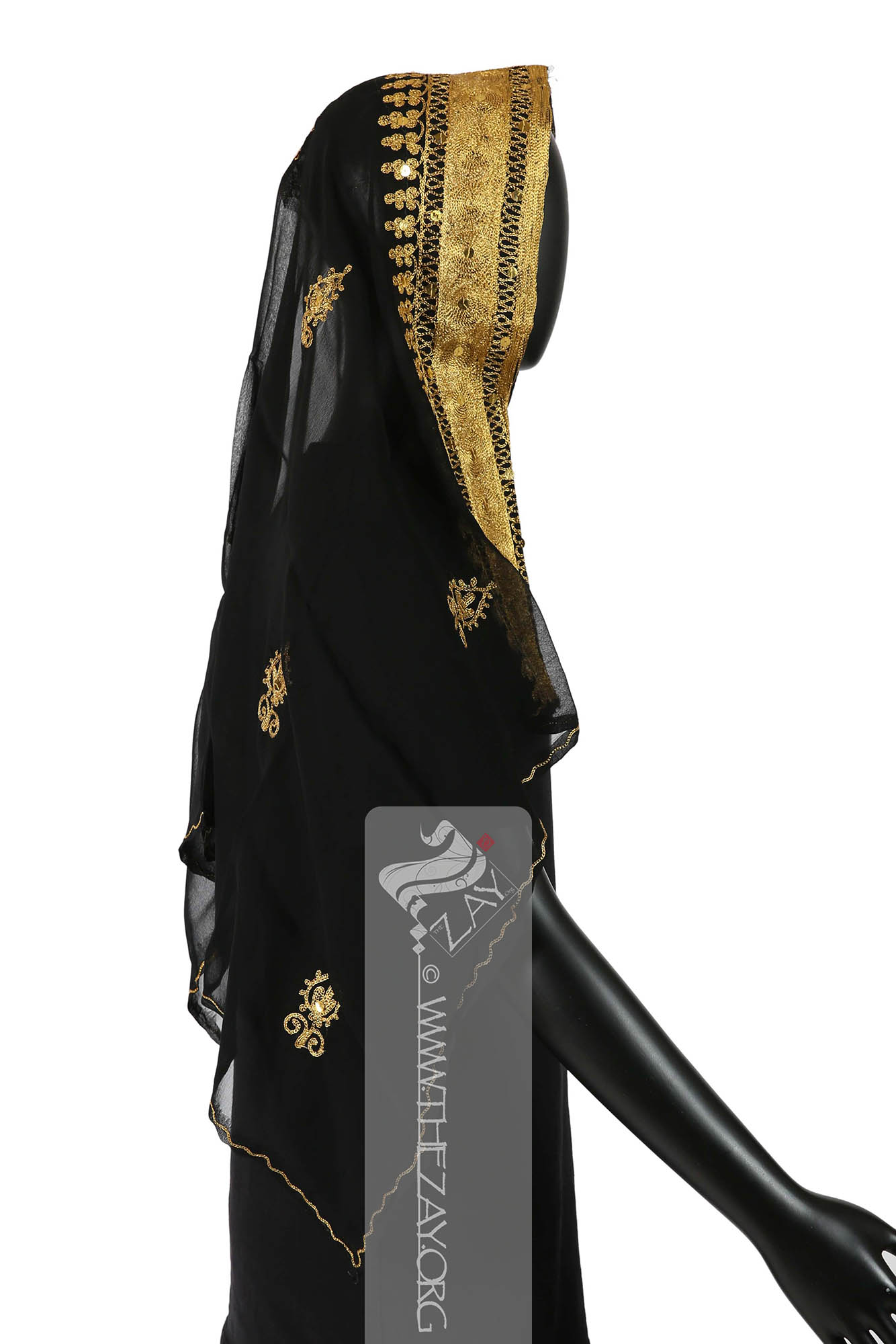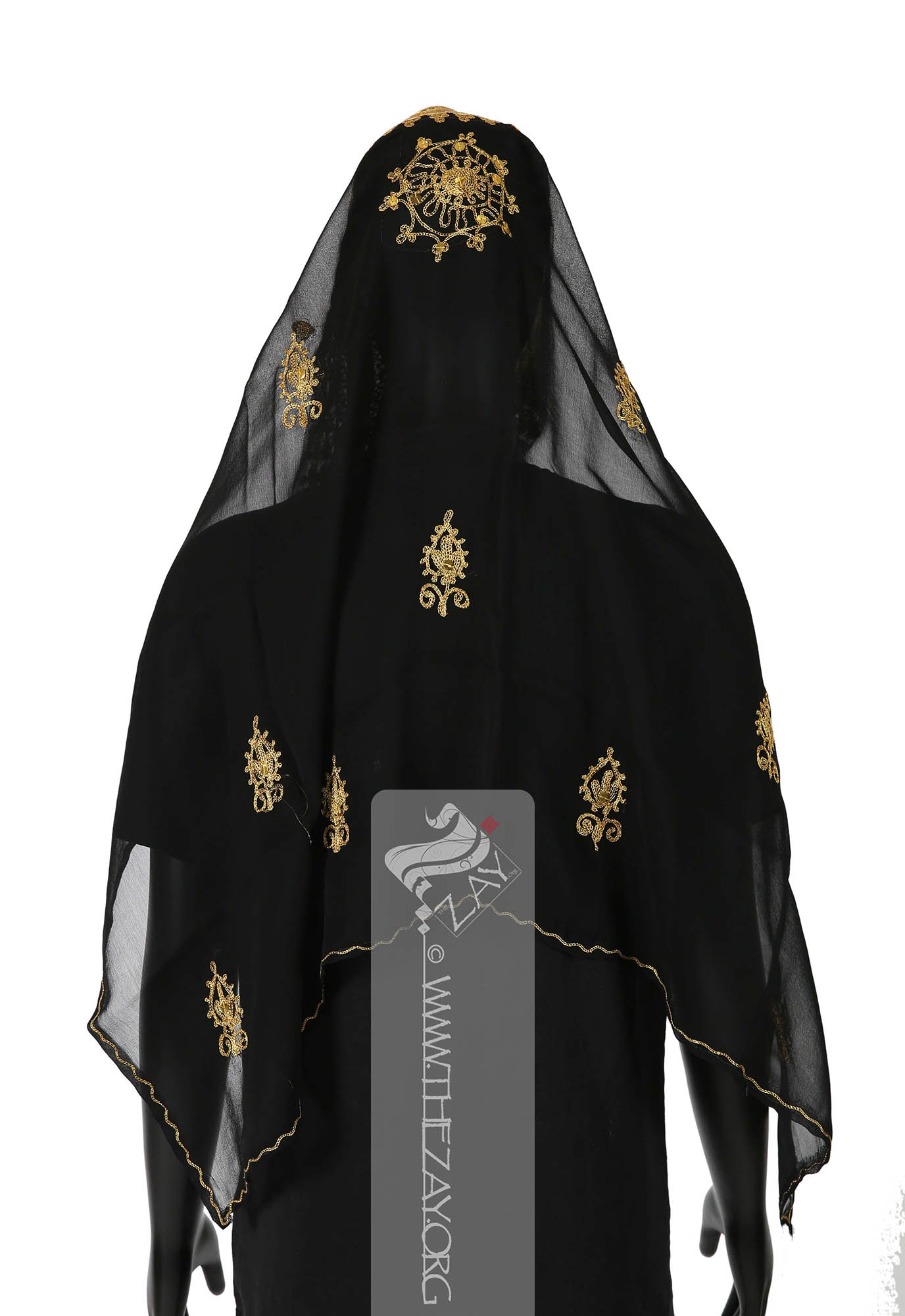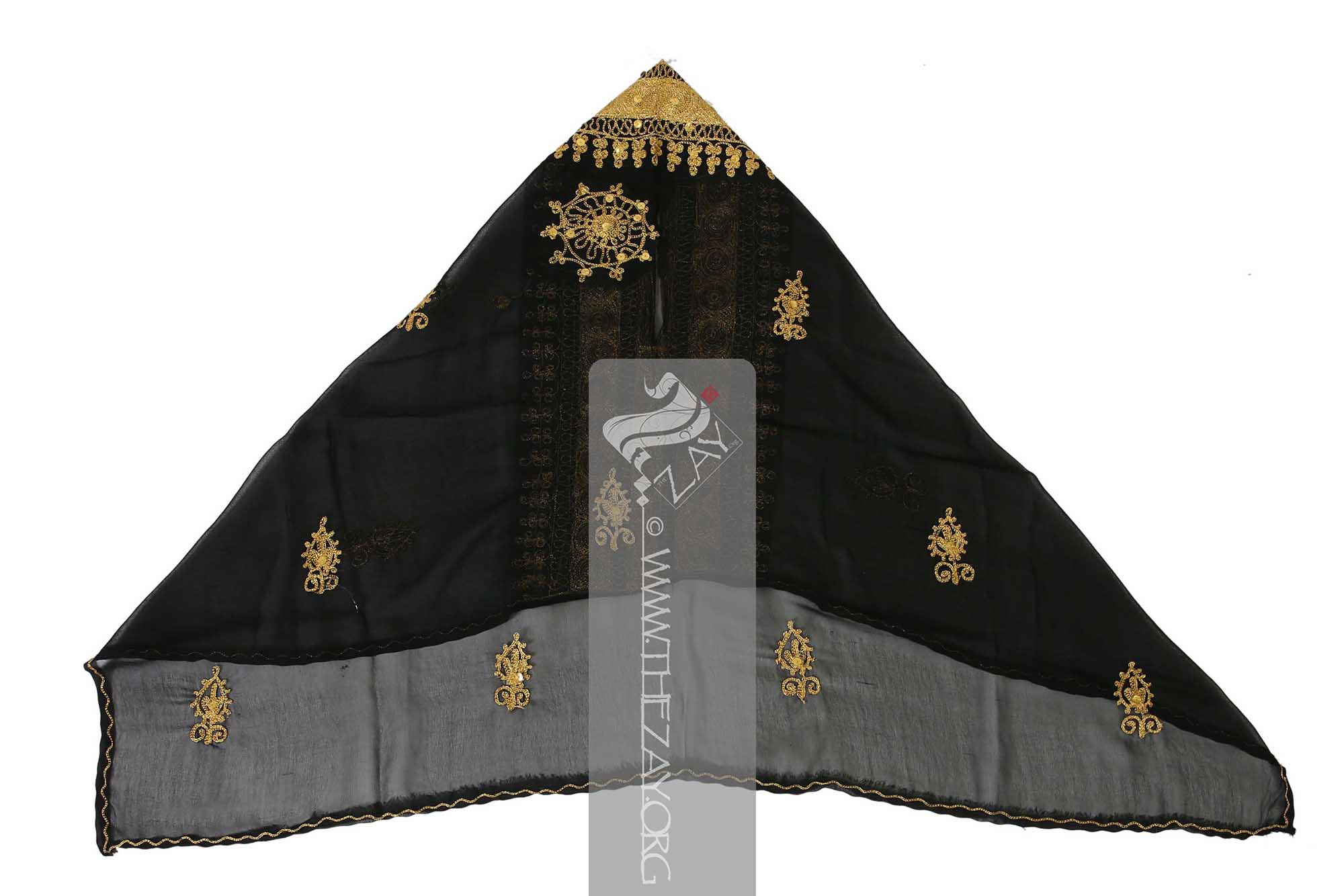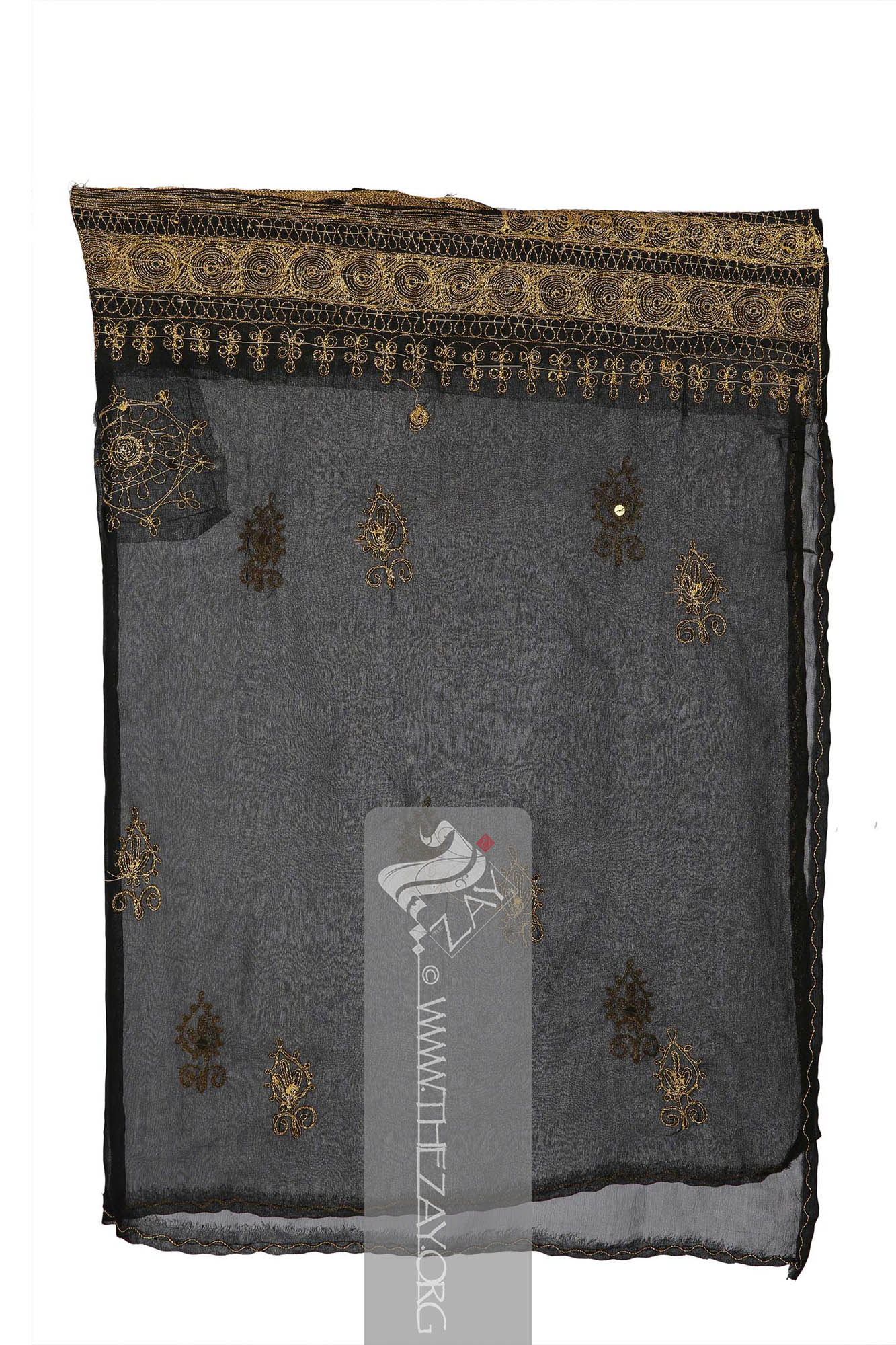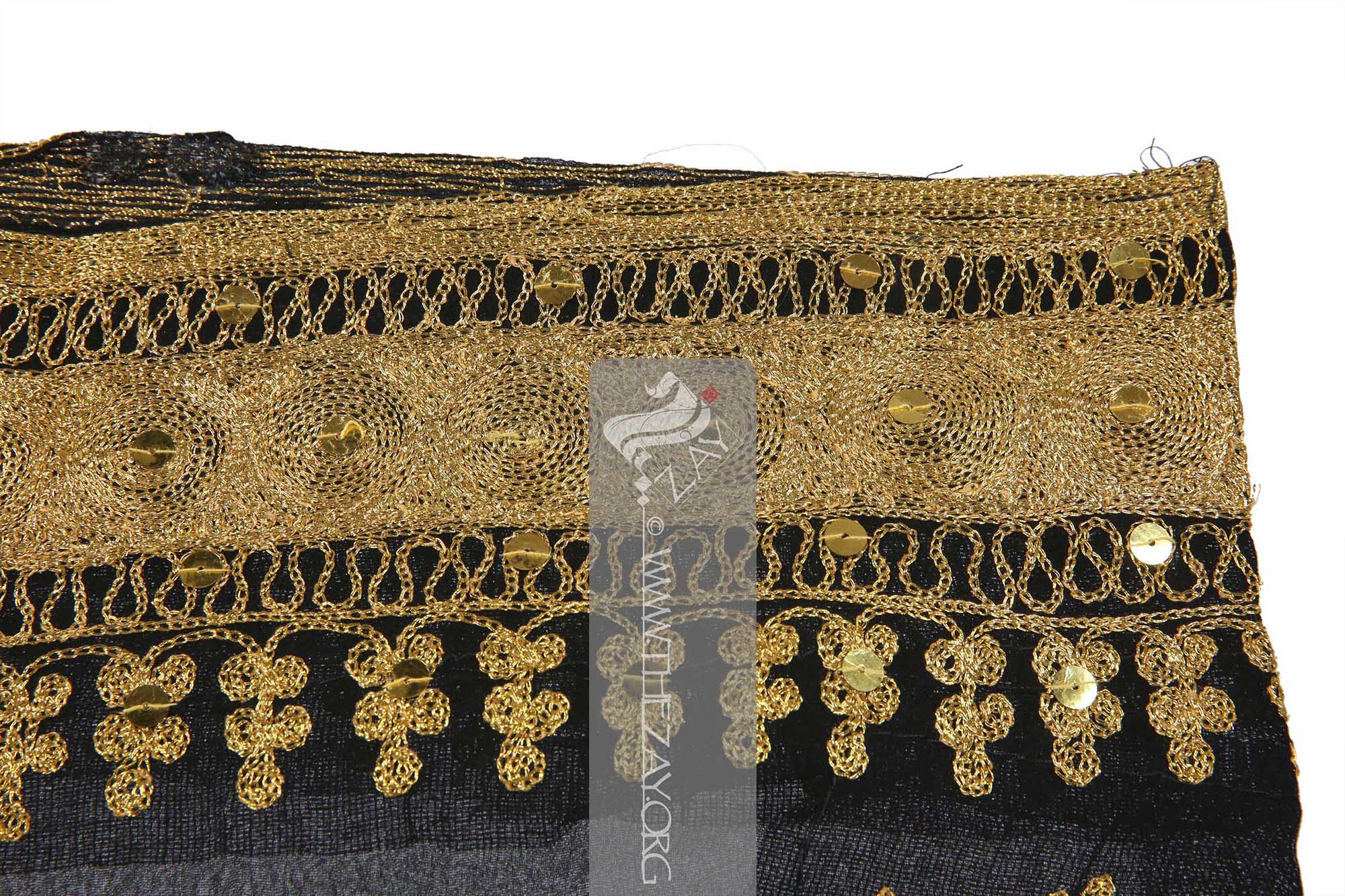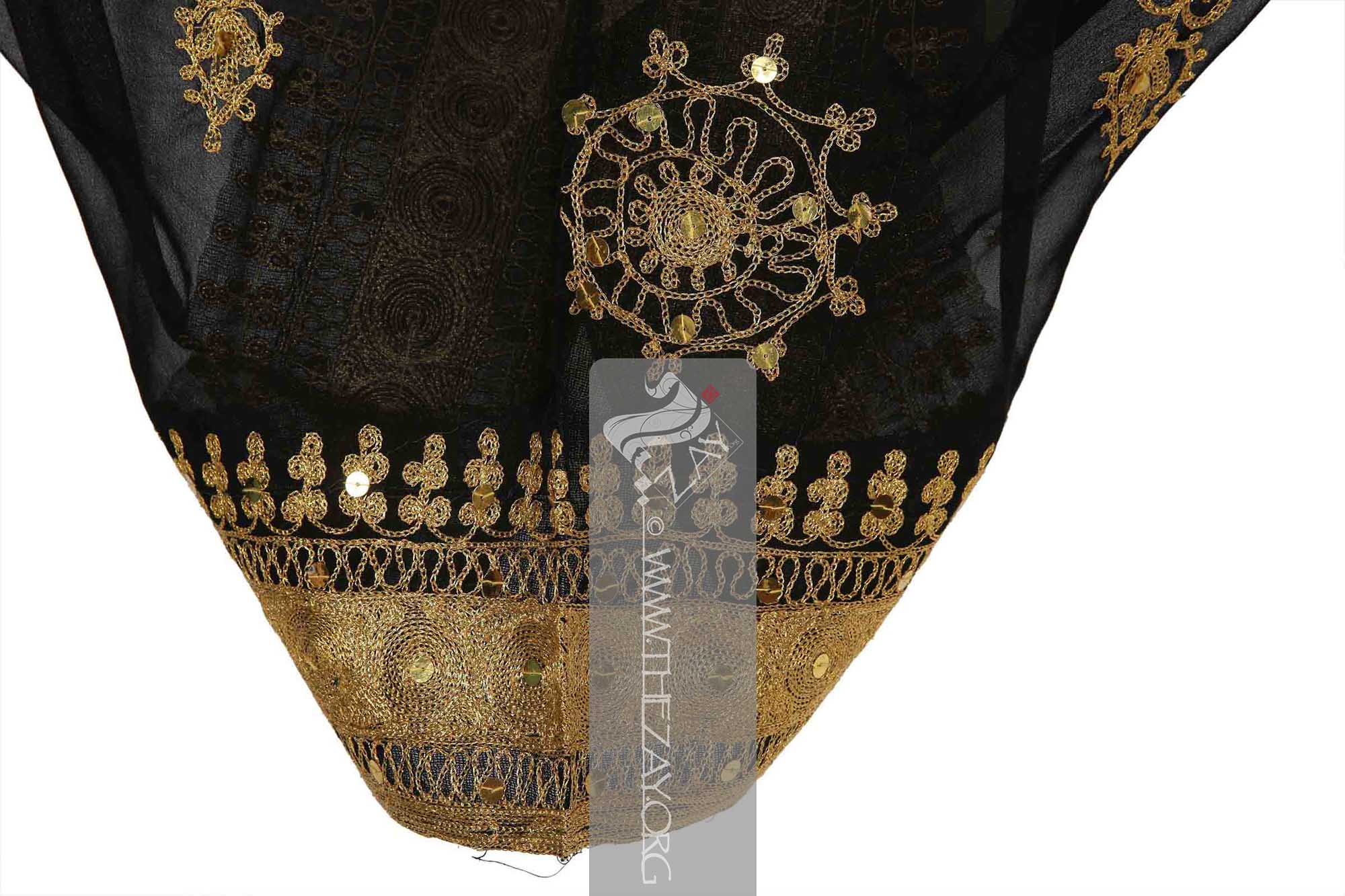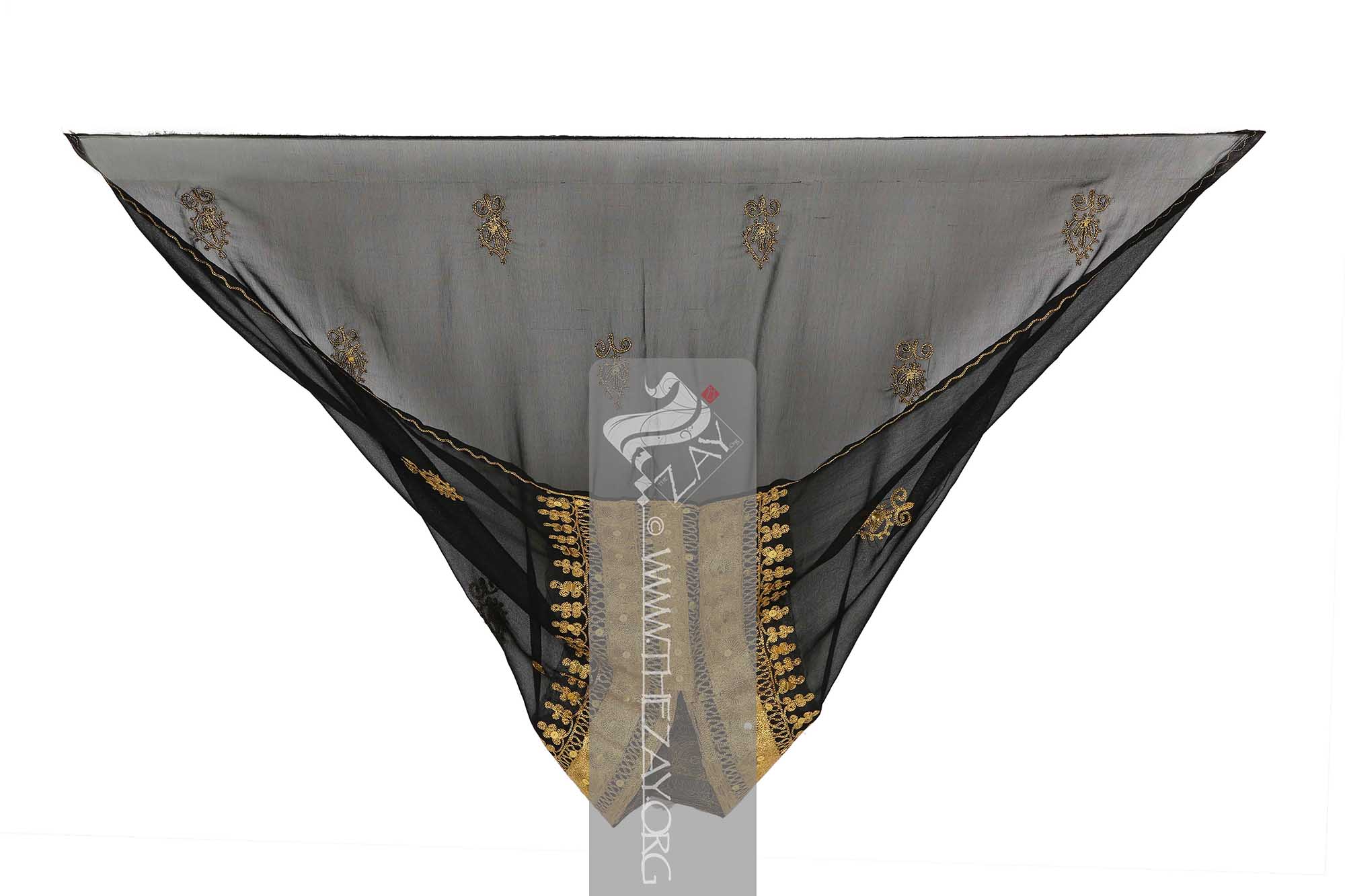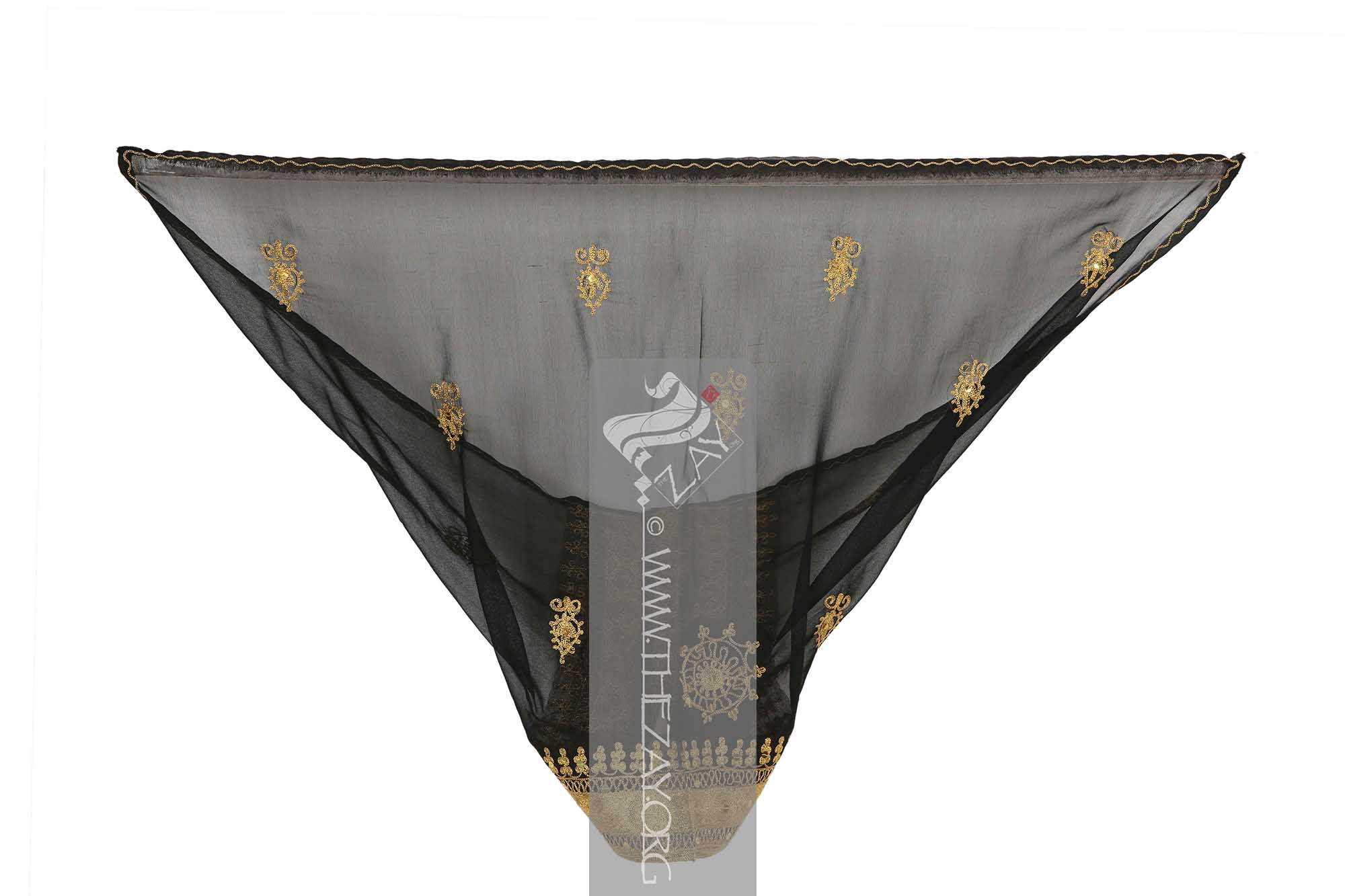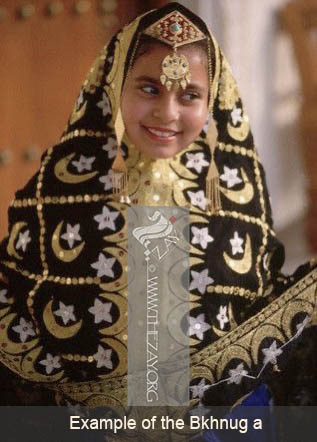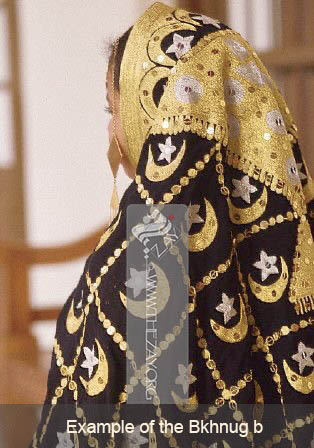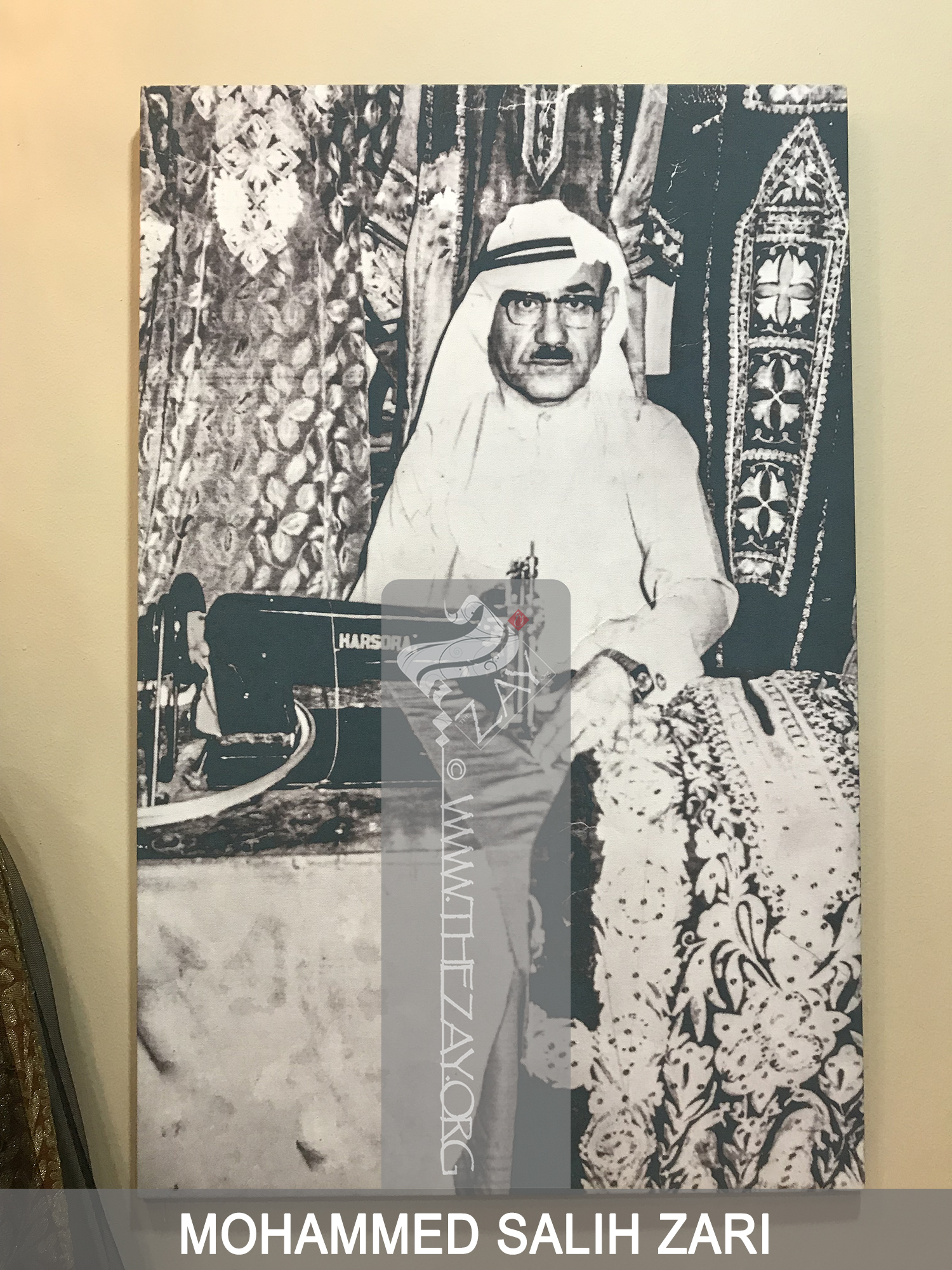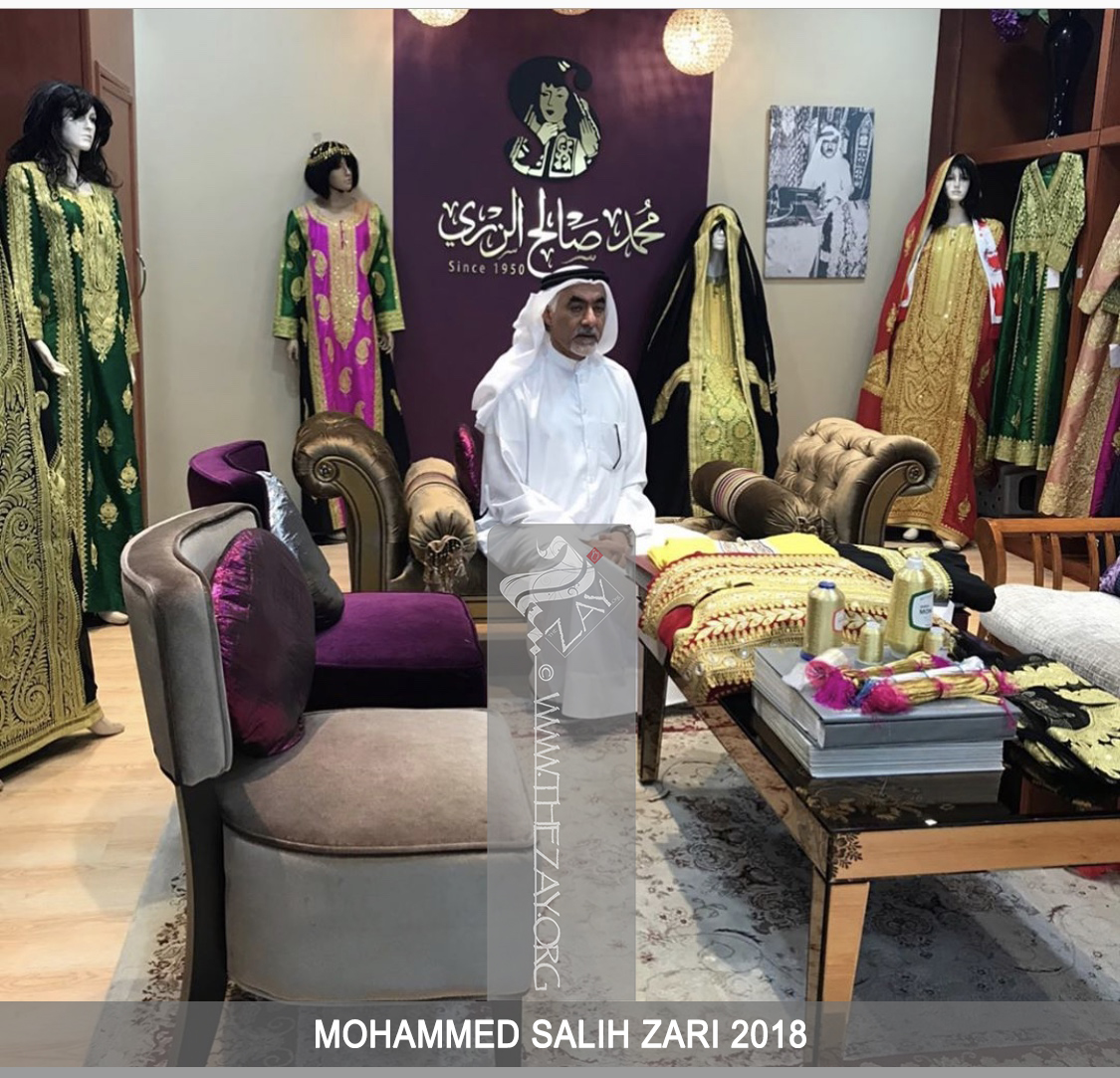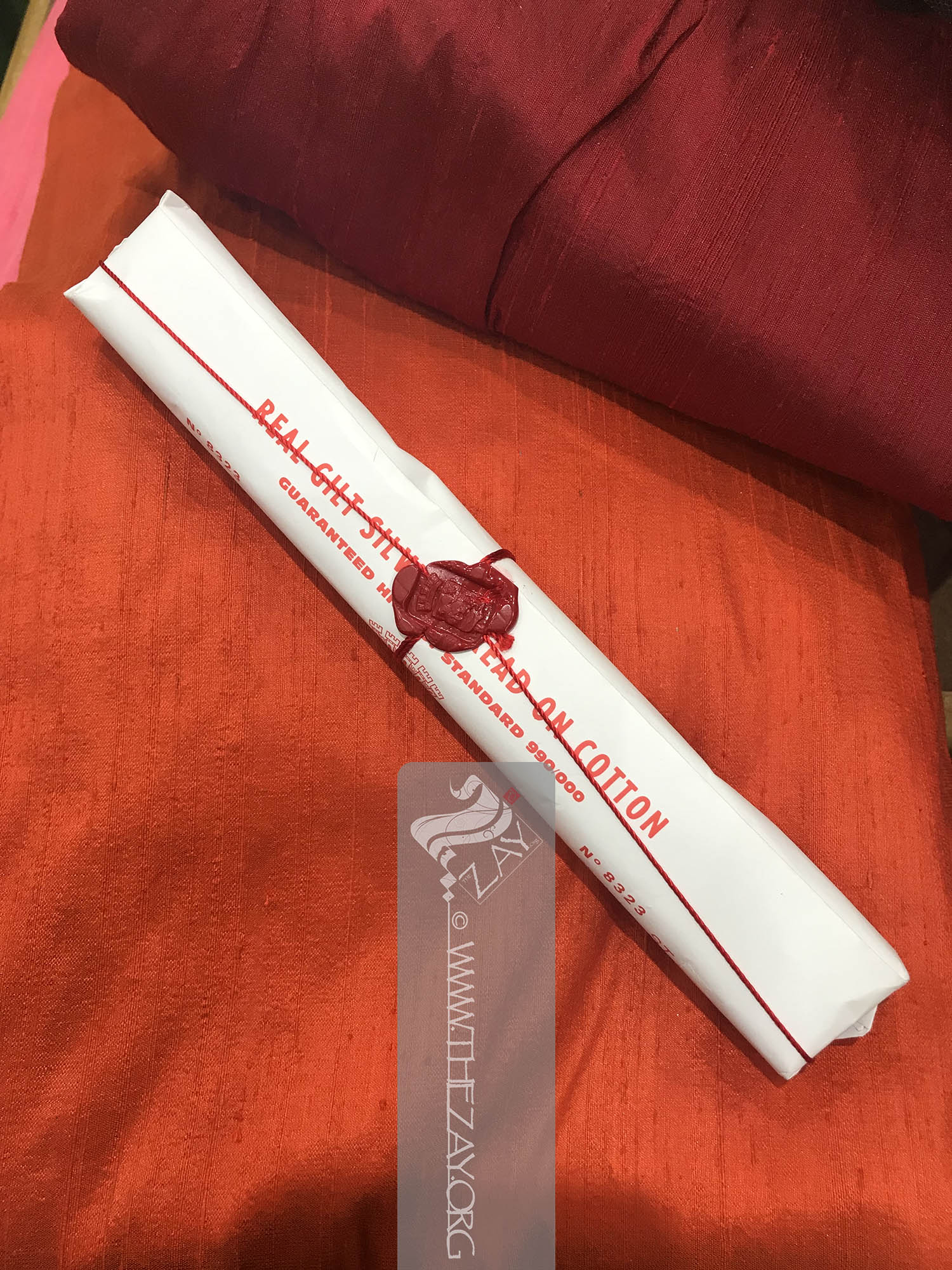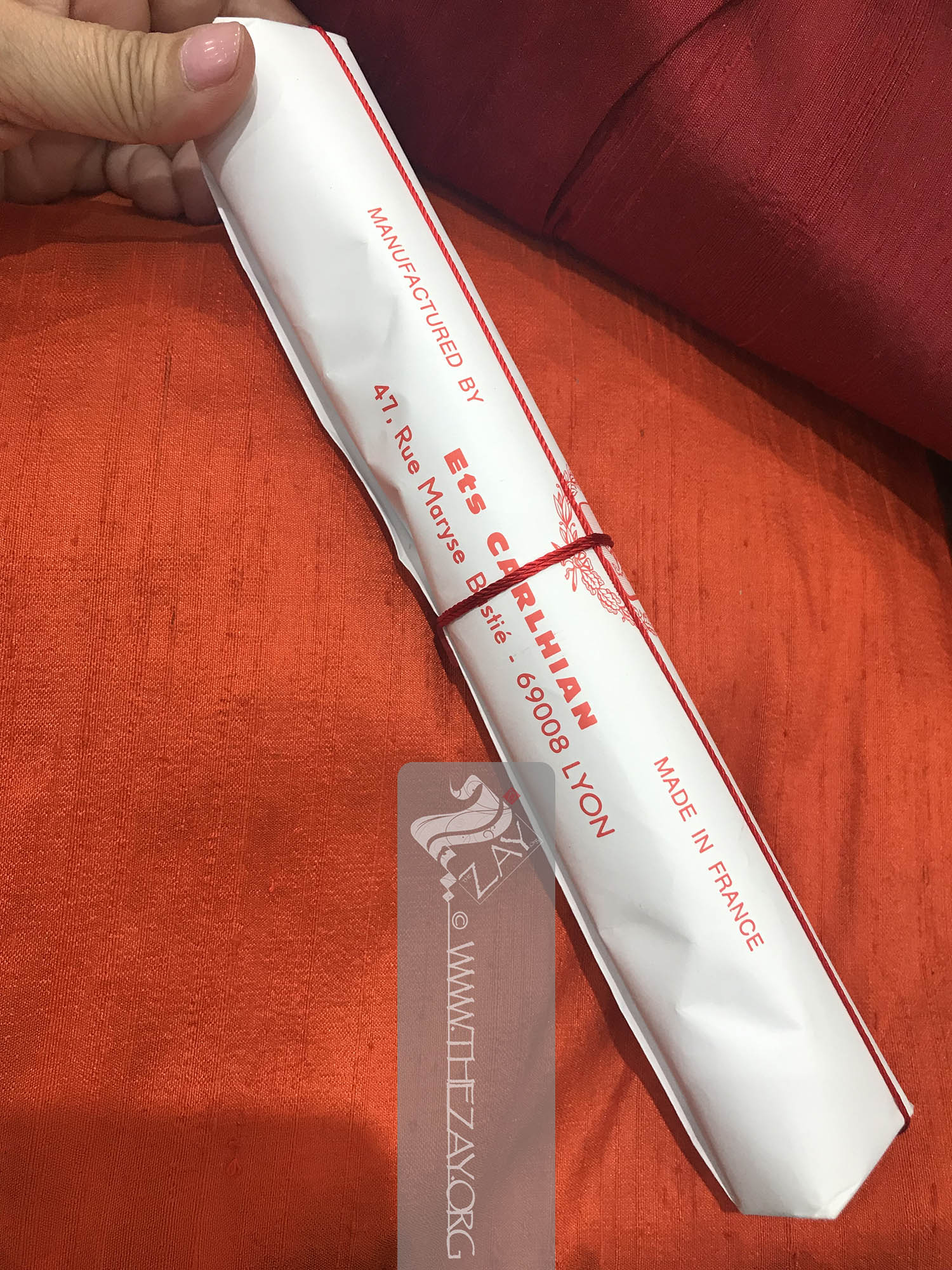[yotuwp type="videos" id="bS7ItCrqmIk,yy_MmwYUXGg" ][yotuwp type="videos" id="I6RiGTSLZYk" ]
Object History In 2018,
Dr. Reem Tariq
Ṭariq: (Arabic; Synonym: tulle_bi_talli; talli; badla; khus_dozi ), series of small metal knots made on a woven net ground as embellishment. The term is commonly used in the Levant Arab region specifically in Lebanon.
El Mutwalli
Dr. Reem Tariq
Ṭariq: (Arabic; Synonym: tulle_bi_talli; talli; badla; khus_dozi ), series of small metal knots made on a woven net ground as embellishment. The term is commonly used in the Levant Arab region specifically in Lebanon.
el Mutwallī: Founder (CEO) of the Zay
Zay: (Arabic: costume, Pl. azyaā’), a set of clothes in a style typical of a particular country or historical period. Initiative, a public figure, speaker and author. An expert curator and consultant in Islamic art and architecture, interior design, historic costume, and UAE heritage. went to Bahrain to visit the shops of Muhammad Saleh Ahmad
Zari
Zarī: (Persian two-syllables: zar: gold & dozi: embellishment), complex embroidery technique that uses metal alloy on silk, satin, or velvet, and may include pearls, beads, and precious stones. Colloquially in the Arab gulf region, the term (zarī) is loosely applied to any gilded thread, embellishment or gilded brocade fabric. Originated in ancient Persia it has been used extensively in Indian and Middle Eastern textiles for centuries. in the Manama old market but discovered that the stores had been moved to a new mall. She spent a whole day talking to the manager, PK, who had arrived from India to Bahrain as a teenager in the 1980s. He had joined
Zari
Zarī: (Persian two-syllables: zar: gold & dozi: embellishment), complex embroidery technique that uses metal alloy on silk, satin, or velvet, and may include pearls, beads, and precious stones. Colloquially in the Arab gulf region, the term (zarī) is loosely applied to any gilded thread, embellishment or gilded brocade fabric. Originated in ancient Persia it has been used extensively in Indian and Middle Eastern textiles for centuries. ’s business working on the shop floor in the old market and worked his way up to become the manager of
Zari
Zarī: (Persian two-syllables: zar: gold & dozi: embellishment), complex embroidery technique that uses metal alloy on silk, satin, or velvet, and may include pearls, beads, and precious stones. Colloquially in the Arab gulf region, the term (zarī) is loosely applied to any gilded thread, embellishment or gilded brocade fabric. Originated in ancient Persia it has been used extensively in Indian and Middle Eastern textiles for centuries. ’s new stores.
During their conversation, Dr. Reem told PK that the purpose of her visit was to acquire historical clothing made by the
Zari
Zarī: (Persian two-syllables: zar: gold & dozi: embellishment), complex embroidery technique that uses metal alloy on silk, satin, or velvet, and may include pearls, beads, and precious stones. Colloquially in the Arab gulf region, the term (zarī) is loosely applied to any gilded thread, embellishment or gilded brocade fabric. Originated in ancient Persia it has been used extensively in Indian and Middle Eastern textiles for centuries. family. PK told her that all he had were two discarded old boxes and he would be happy if she accepted some of them as a gift.
Dr. Reem found this veil (
bukhnug
Bukhnug: (Arabic: khanaq: to choke, pl. bakhānq, bakhānk), a form of veil (Niqāb), serves as a (hijāb) used by young girls and women, to cover the head, neck, and upper body, the sides of which are pinned, or sewn, under the chin. Colloquially, the letter (qāf) is pronounced (ga).) in one of the boxes in addition to two other dresses. The second box contained an old mould for gold, coin-like garment decorations called (
hruf
Ḥrūf: (Arabic: ḥarf: alphabetical character), thin coin like platelets in gold, with a maximum diameter of 15 mm, stamped in shapes resembling alphabetical characters (ḥurūf) and applied by hand to adorn overgarments (athwāb), tunic dresses (kanādīr), and face masks (barāg’). Common in the Arab Gulf region as a form of ornament. It is melted down and sold in times of need. ), and a black and white photo of the deceased Muhammad Saleh
Zari
Zarī: (Persian two-syllables: zar: gold & dozi: embellishment), complex embroidery technique that uses metal alloy on silk, satin, or velvet, and may include pearls, beads, and precious stones. Colloquially in the Arab gulf region, the term (zarī) is loosely applied to any gilded thread, embellishment or gilded brocade fabric. Originated in ancient Persia it has been used extensively in Indian and Middle Eastern textiles for centuries. .
PK also presented Dr. Reem with paper rolls containing straws of pure silver (
talli
Tallī: (Turkish: tel – wire, string), Gulf Arab – a woven braided trimming made with metal wire, threads and ribbons often sewn on detachable panels used as embellishments. Other – (Synonym: tulle_bi_talli
Tūlle_bi_tallī: (French: Tulle – a city in France where fine material for veil was first made; Turkish: tel – wire; Synonym: tariq; talli; badla; khus_dozi
Khus_dozi: (Persian: Khvosh – an Iranian province; dozi – needlework; Synonym: tariq; talli; tulle_bi_talli; badla), series of small metal knots made on a woven net ground as embellishment. The term is commonly used in Iran and parts of the Arabian Peninsula possibly because Khvosh was one of the centres for the craft.
), series of small metal knots made on a woven net ground as embellishment. The term is commonly used in the North African Arab region specifically in Egypt.
; tariq; badla; khus_dozi
Khus_dozi: (Persian: Khvosh – an Iranian province; dozi – needlework; Synonym: tariq; talli; tulle_bi_talli; badla), series of small metal knots made on a woven net ground as embellishment. The term is commonly used in Iran and parts of the Arabian Peninsula possibly because Khvosh was one of the centres for the craft.
), series of small metal knots made on a woven net ground as embellishment.
), still wrapped with strings and sealed with red wax, bearing the product details and the name of the manufacturer from the French city of Lyon. Originally the silver straw
talli
Tallī: (Turkish: tel – wire, string), Gulf Arab – a woven braided trimming made with metal wire, threads and ribbons often sewn on detachable panels used as embellishments. Other – (Synonym: tulle_bi_talli
Tūlle_bi_tallī: (French: Tulle – a city in France where fine material for veil was first made; Turkish: tel – wire; Synonym: tariq; talli; badla; khus_dozi
Khus_dozi: (Persian: Khvosh – an Iranian province; dozi – needlework; Synonym: tariq; talli; tulle_bi_talli; badla), series of small metal knots made on a woven net ground as embellishment. The term is commonly used in Iran and parts of the Arabian Peninsula possibly because Khvosh was one of the centres for the craft.
), series of small metal knots made on a woven net ground as embellishment. The term is commonly used in the North African Arab region specifically in Egypt.
; tariq; badla; khus_dozi
Khus_dozi: (Persian: Khvosh – an Iranian province; dozi – needlework; Synonym: tariq; talli; tulle_bi_talli; badla), series of small metal knots made on a woven net ground as embellishment. The term is commonly used in Iran and parts of the Arabian Peninsula possibly because Khvosh was one of the centres for the craft.
), series of small metal knots made on a woven net ground as embellishment.
was weighed in (
tulah
Tūlah (Urdu and Sanskrit: tula, and Punjabi: tolaka), a unit of measurement adopted for the main mass of the weights and measurements system in Anglo-India since 1833, although it was used earlier in several regions such as Aden and Zanzibar. The (tula) has no precise weight, it is around 12g and 12.5g. In the colloquial UAE dialect, the word refers to silver.) and imported from Gujarat India, in time, the French type became more favoured due to its higher quality.
Muhammad Saleh Ahmad
Zari
Zarī: (Persian two-syllables: zar: gold & dozi: embellishment), complex embroidery technique that uses metal alloy on silk, satin, or velvet, and may include pearls, beads, and precious stones. Colloquially in the Arab gulf region, the term (zarī) is loosely applied to any gilded thread, embellishment or gilded brocade fabric. Originated in ancient Persia it has been used extensively in Indian and Middle Eastern textiles for centuries. is considered one of the oldest and most famous
thawb
Thawb: (Arabic: thawb, Pl. Athwāb/thībān), can be pronounced thobe
Thobe: (Arabic: thawb, Pl. Athwāb/thībān), can be pronounced thawb or tobe
Tobe: (Arabic: thawb, Pl. Athwāb/thībān), can be pronounced thawb or thobe based on locale. The standard Arabic word for ‘fabric’ or ‘garment’. It can refer to a qamīs-like tunic worn by men and women in the Arabian Peninsula, Iraq, the southern and south-western ports and islands of Iran, and some countries in East and West Africa. More specifically, it can refer to the square-shaped Bedouin overgarment worn by women. based on locale. The standard Arabic word for ‘fabric’ or ‘garment’. It can also refer to a qamīs-like tunic worn by men and women in the Arabian Peninsula, Iraq, the southern and south-western ports and islands of Iran, and some countries in East and West Africa. More specifically, it can refer to the square-shaped Bedouin overgarment worn by women. or tobe
Tobe: (Arabic: thawb, Pl. Athwāb/thībān), can be pronounced thawb or thobe based on locale. The standard Arabic word for ‘fabric’ or ‘garment’. It can refer to a qamīs-like tunic worn by men and women in the Arabian Peninsula, Iraq, the southern and south-western ports and islands of Iran, and some countries in East and West Africa. More specifically, it can refer to the square-shaped Bedouin overgarment worn by women. based on locale. The standard Arabic word for ‘fabric’ or ‘garment’. It can also refer to a qamīs-like tunic worn by men and women in the Arabian Peninsula, Iraq, the southern and south-western ports and islands of Iran, and some countries in East and West Africa. More specifically, it can refer to the square-shaped Bedouin overgarment worn by women in the Arabian Gulf region. nashil makers in Bahrain. After sewing the dress and embroidering it with
zari
Zarī: (Persian two-syllables: zar: gold & dozi: embellishment), complex embroidery technique that uses metal alloy on silk, satin, or velvet, and may include pearls, beads, and precious stones. Colloquially in the Arab gulf region, the term (zarī) is loosely applied to any gilded thread, embellishment or gilded brocade fabric. Originated in ancient Persia it has been used extensively in Indian and Middle Eastern textiles for centuries. threads by hand, he knocked and burnished the embroidery until it became polished, smooth and shining.
Object Features This translucent, black, chiffon silk, child veil (
bukhnug
Bukhnug: (Arabic: khanaq: to choke, pl. bakhānq, bakhānk), a form of veil (Niqāb), serves as a (hijāb) used by young girls and women, to cover the head, neck, and upper body, the sides of which are pinned, or sewn, under the chin. Colloquially, the letter (qāf) is pronounced (ga).) is a form of (
hijab
Ḥijab: (Arabic: to cover or conceal, pl: aḥjibah), refers to any article of dress or otherwise, that serves to conceal. In colloquial Egyptian, refers to a large diamond-shaped motif on the torso of (tūr_bi_tallī) wedding dress, or dance robe. Also applied to large central medallion on shawls and scarves.) that covers the head, neck, shoulders, and upper body.
Basically, a rectangular fabric folded on the long side and sawn, leaving an opening that surrounds the face, covering the underside of the chin, and draping in front to the waist. The design frees the wearer from the need to fasten or adjust it.
The
bukhnug
Bukhnug: (Arabic: khanaq: to choke, pl. bakhānq, bakhānk), a form of veil (Niqāb), serves as a (hijāb) used by young girls and women, to cover the head, neck, and upper body, the sides of which are pinned, or sewn, under the chin. Colloquially, the letter (qāf) is pronounced (ga). is machine embroidered with synthetic gold thread (
zari
Zarī: (Persian two-syllables: zar: gold & dozi: embellishment), complex embroidery technique that uses metal alloy on silk, satin, or velvet, and may include pearls, beads, and precious stones. Colloquially in the Arab gulf region, the term (zarī) is loosely applied to any gilded thread, embellishment or gilded brocade fabric. Originated in ancient Persia it has been used extensively in Indian and Middle Eastern textiles for centuries. ) in arabesque motifs, accentuating the area surrounding the face and extending down the front seam line.
Single leaf motif is then sprinkled across the rest of the fabric. Gold colour sequins are hand sawn for added sparkle.
The
bukhnug
Bukhnug: (Arabic: khanaq: to choke, pl. bakhānq, bakhānk), a form of veil (Niqāb), serves as a (hijāb) used by young girls and women, to cover the head, neck, and upper body, the sides of which are pinned, or sewn, under the chin. Colloquially, the letter (qāf) is pronounced (ga). was extensively worn by young girls across the Arab Gulf region from the age of seven to puberty, where upon they married and began to don the outer cloak (
abayah
‘Abāyah: (Arabic: cloak, Pl. ‘abāyāt, or ‘Ibī. In Classical Arabic: ‘abā’ah, pl: ‘abā’āt, synonyms: ‘Abā, ‘abāh, ‘abāt, dafah
Daffah : (Arabic: side, synonyms: ‘Abā, ‘abāyah, ‘abāh, ‘abāt, bisht or mishlaḥ), long, wide, and sleeveless outer cloak worn in public by both sexes. In time this article of dress evolved and changed in shape, style, and function., bisht, or mishlaḥ), long, wide, and sleeveless outer cloak worn in public by both sexes. In time this article of dress evolved and changed in shape, style, and function.) and face mask (
burgu
Burgu’: (Arabic: burqa’: mask, pl. barāqi’), a generic name given to one of many forms of face veils or masks, known as (niqāb). Stiffer versions made of indigo-dyed cotton, are known as (bat
Bāṭ: (Arabic: underarm/armpit, pl. bītān, synonym: ibt, tkhrāṣah, tnfāyah/tnfājah), gusset, a triangular or rhomboidal piece of fabric inserted into the seam to add breadth or reduce stress from tight-fitting clothing. Used for underarms on tunic dresses, side sleeve panels on overgarments (thāwb), and undergarments (ṣarāwl). ūlah) in Oman and Qatar. The (qāf) turns to (ga) in many Arab dialects.‘).
It came in different sizes, to cover the upper body, and could extend below the waistline in front. Many had long back versions, flowing and trailing behind as the person walked.
Thought to be mainly decorated by machine embroidery, some versions also come adorned in (
naqdah
Naqdah: (Arabic: coins, synonyms: mnaghadah, naghdah, mnaghadah) Since silver was a form of currency, it came to refer to silver adorned garments. The term refers to articles decorated with silver (tallī) straw (khūs) in small coin-like dots. The (qāf) is pronounced (gha) colloquially.) and (
talli
Tallī: (Turkish: tel – wire, string), Gulf Arab – a woven braided trimming made with metal wire, threads and ribbons often sewn on detachable panels used as embellishments. Other – (Synonym: tulle_bi_talli
Tūlle_bi_tallī: (French: Tulle – a city in France where fine material for veil was first made; Turkish: tel – wire; Synonym: tariq; talli; badla; khus_dozi
Khus_dozi: (Persian: Khvosh – an Iranian province; dozi – needlework; Synonym: tariq; talli; tulle_bi_talli; badla), series of small metal knots made on a woven net ground as embellishment. The term is commonly used in Iran and parts of the Arabian Peninsula possibly because Khvosh was one of the centres for the craft.
), series of small metal knots made on a woven net ground as embellishment. The term is commonly used in the North African Arab region specifically in Egypt.
; tariq; badla; khus_dozi
Khus_dozi: (Persian: Khvosh – an Iranian province; dozi – needlework; Synonym: tariq; talli; tulle_bi_talli; badla), series of small metal knots made on a woven net ground as embellishment. The term is commonly used in Iran and parts of the Arabian Peninsula possibly because Khvosh was one of the centres for the craft.
), series of small metal knots made on a woven net ground as embellishment.
).




